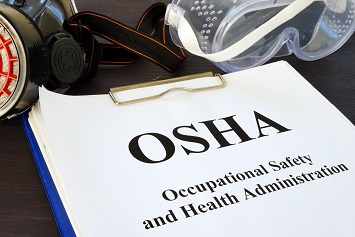Reduced Occupational Safety and Health Administration (OSHA) workplace inspections during the COVID-19 pandemic left U.S. workers’ safety at increased risk, the Department of Labor’s Office of the Inspector General (OIG) concluded in its audit of the agency.
At the beginning of the pandemic, OSHA received a surge of complaints in a matter of months, according to the OIG, drawing questions from Congress, labor unions, and the media about federal oversight of the health and safety of 130 million workers at more than 8 million worksites.
The audit examined what plans and guidance OSHA developed to address challenges created by COVID-19 and to what extent those challenges affected the agency’s ability to protect the safety of workers and its own workforce. The OIG found both an increased number of safety and health complaints received last year and a reduced number of inspections. The audit also determined that most inspections were not performed on-site, reducing person-to-person contact for OSHA compliance safety and health officers (CSHOs) but resulting in greater worker safety risks.
OSHA received 15% more complaints in 2020 compared with the same period in 2019 but performed 50% fewer inspections. There has been an increased risk that OSHA is not providing the level of protection that workers need at their jobsites, the OIG concluded.
Workplace hazards may go unidentified and unabated longer, leaving employees vulnerable, the OIG suggested, because most OSHA inspections are being done remotely during the pandemic.
The on-site presence of OSHA CSHOs during inspections has historically resulted in timely mitigation efforts for at least a portion of the hazards identified, according to the OIG. A 2017 OIG report noted that for approximately one-third of OSHA-issued citations reviewed, employers abated the hazard during the inspection or within 24 hours of OSHA’s identifying the hazard.
The OIG also faulted OSHA’s failure to issue an emergency temporary standard (ETS) for COVID-19. OSHA issued several guidance documents to enhance safety provisions during the pandemic, but guidance is not enforceable like rules or standards would be, the OIG observed. An ETS for airborne infectious diseases would better protect workers’ health and safety, according to the OIG.
Last year, California, Michigan, Oregon, and Virginia established ETSs for workplace COVID-19 exposures. Virginia established a permanent COVID-19 standard earlier this year.
The OIG also found that while federal OSHA issued 295 violations for 176 COVID-19-related inspections, state workplace safety and health agencies issued 1,679 violations for 756 COVID-19-related inspections.
The OIG made the following recommendations to OSHA:
- Improve OSHA’s inspection strategy by prioritizing very high-risk and high-risk employers for COVID-19-related on-site inspections, particularly as businesses reopen and operations increase across the country.
- Ensure that remote inspections are tracked retroactive to February 1, 2020, and going forward.
- Compare remote inspections to on-site inspections, and document analysis of the frequency and timeliness of inspectors in identifying and ensuring abatement of worksite hazards in both types of inspections.
- Analyze and determine whether establishing an infectious disease-specific ETS is necessary to help control the spread of COVID-19 as employees return to worksites.
OSHA did not respond to the OIG’s findings but concurred with each of the report’s four recommendations. On January 21, President Joe Biden ordered OSHA to consider establishing an ETS for workplace COVID-19 protections by March 15.

